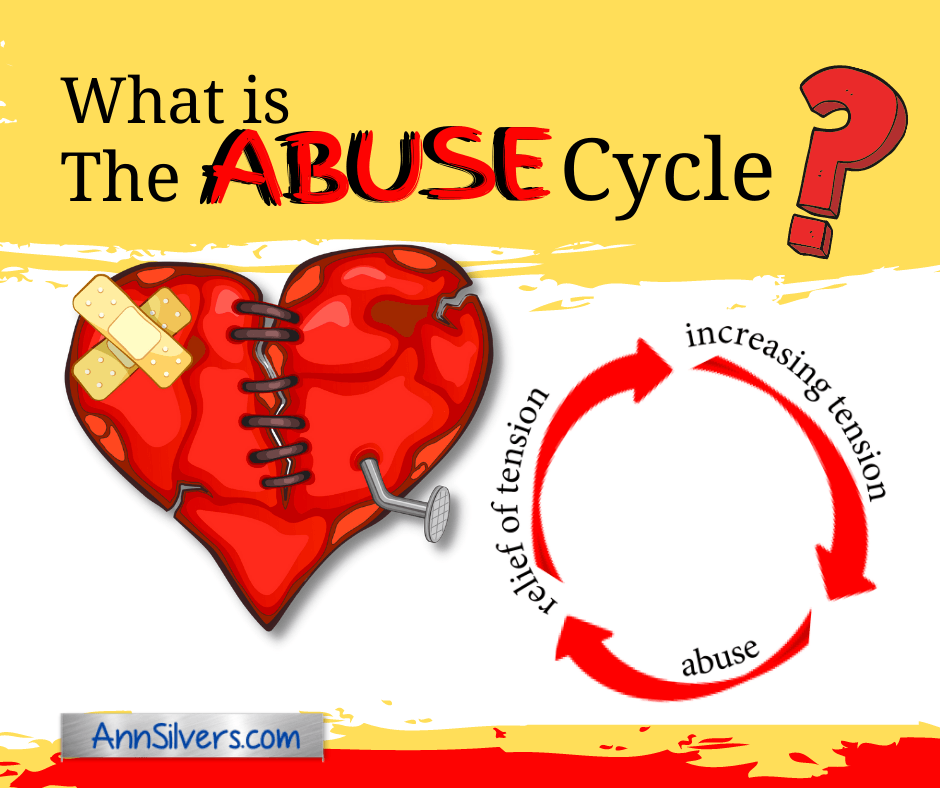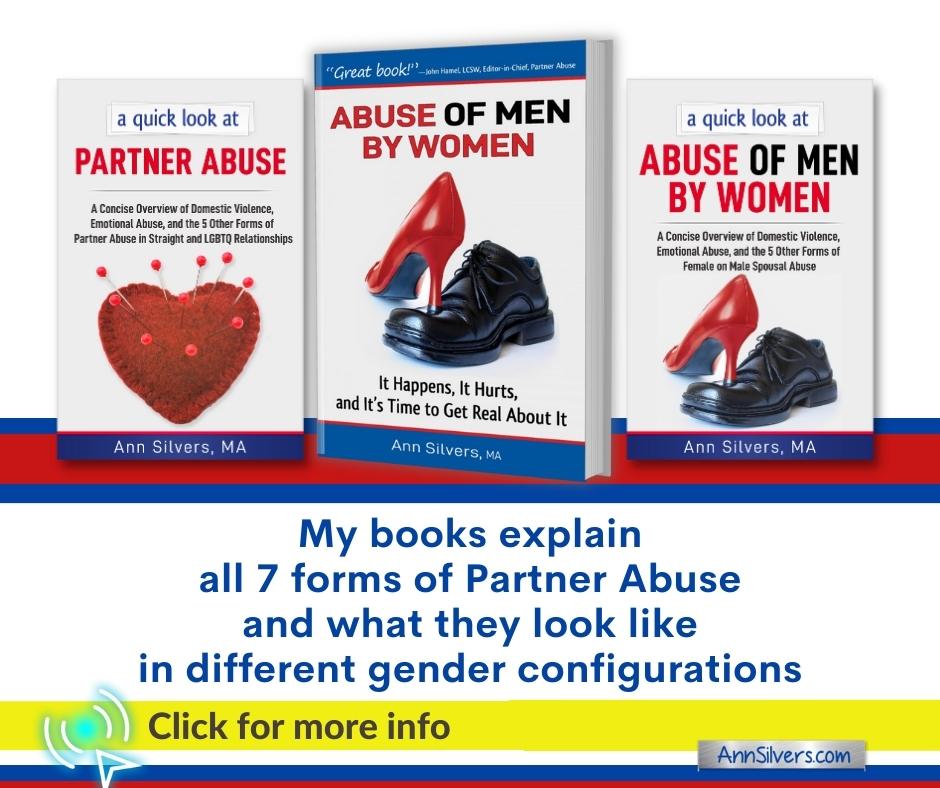What is the Cycle of Abuse? Is There Hope for Real Change?

One of the confusing aspects of partner abuse is that it is often not constant. There can be phases that are more intense and others that are less intense, possibly involving a period of regret, apology, and promises of change that increase hope that things will be OK. Spinning in these cycles is disorienting and exhausting.
What You'll Learn About the Abuse Cycle In This Post
| What is Intimate Partner Abuse? |
| 7 Types of Partner Abuse |
| What is The Abuse Cycle or Cycle of Domestic Violence? |
| How Fast are Cycles of Abuse? |
| The Increasing Tension Phase of the Abuse Cycle |
| The Relief of Tension Phase of the Abuse Cycle |
| Green Flags: Key Markers of Real Change |
| When to Get Off the Merry-Go-Round |
| Helpful Resources: Intimate Partner Abuse Books |
What is Intimate Partner Abuse?
First, let's clarify what I'm talking about when I refer to partner abuse.
Intimate partner abuse is bullying within a romantic relationship.
Partner abuse is a pattern of controlling, demeaning, and/or punishing behaviors and attitudes with a dating, cohabiting, or marriage partner, during or after the relationship.
At its core, partner abuse is driven by self-centered motivations.
In some cases, the abuse is instigated by one person predominantly or exclusively, while in other cases, abuse is bi-directional.
Some abusive behaviors — such as isolating the target of abuse from friends and family — can happen in any couple configuration.
Some abusive behaviors — such as a woman purposefully getting pregnant to trap a man, or someone threatening to out their closeted LGBTQ partner—are available specifically because of the particular genders, gender identities, or sexual orientation of the target of the abuse and the source of the abuse.
7 Types of Partner Abuse
We most often think about physically violent acts (domestic violence) when we think about partner abuse, but there are many methods of choice for controlling, demeaning, and punishing partners.
Partner abuse takes on many forms. It may be:
- verbal
- sexual
- financial
- physical
- spiritual
- legal
- emotional/psychological
All types of abuse create scars—some are physical, others are psychological, emotional, financial... .
What is The Abuse Cycle or Cycle of Domestic Violence?
Any of the 7 forms of partner abuse, including domestic violence (physical abuse) may happen in cycles.
While the cycle of abuse is often talked about, it is important to realize that in some cases of partner abuse, there isn't a cycle. In some relationships, tension remains relentlessly high; in others, violent outbursts seem to come out of nowhere.
Sometimes, though not always, abuse occurs in cycles:
- increasing tension leading to
- abuse incident(s),
- which are followed by a relief of tension (and possibly apologies), but then
- tension increases again.

How Fast are Cycles of Abuse?
Cycles of abuse might occur over months or minutes.
The time period for each part of the cycle is not necessarily the same or consistent.
They may form a pattern that is repeated with similar timing, or they may have a different pace at different times in the relationship.
The Increasing Tension Phase of the Abuse Cycle
The increasing tension phase of the abuse cycle can be excruciating.
There is a "walking on eggshells" aspect to this period of time. The target of the abuse can be on edge, wondering what will set the abusive partner off.
The Relief of Tension Phase of the Abuse Cycle
An abusive partner may get relief of the tension inside themselves when they act out abusively. This may result in a less-tense phase following abuse.
This post-abuse phase may include remorse, apologies, and promises to change.
This phase may ignite hope that the relationship will improve. It is one of the factors that can keep an abused person stuck in an abusive relationship. (For 13 other reasons abused people stay, check out this post: Why Do People Stay in Abusive Relationships.)
There aren't always apologies in this phase. An abusive partner may never apologize. When there are apologies, they may be apologies that aren’t apologies: versions of “I’m sorry I did it, but I wouldn’t have done it if you hadn’t done ____________.”
Green Flags: Key Markers of Real Change
Sometimes people really do change. They recognize that their behavior and attitudes are destructive, and they get help to figure out why they have been the way they've been and build new skills that turn them into a good partner.
There are a number of elements involved in real change on the part of someone who has been abusive:
- They recognize the destructiveness of their attitudes and behaviors
- They take responsibility for their attitudes and behaviors
- They seek help to discover why they have been doing what they've been doing and education so they can build healthy relationship skills
- They continue to work on themselves beyond an initial few steps
When to Get Off the Merry-Go-Round
An abused person gets to decide if they are willing to give the partner another chance or if the last go around the abuse cycle was really the last go-around.
There are many considerations when making this decision. I go into detail on how to decide whether to end an abusive relationship in my book Abuse OF Men BY Women: It Happens, It Hurts, and It's Time to Get Real About It. While the book focuses on male-to-female abuse, it includes lots of valuable information for people who are in any gender configuration of abusive relationship.
Helpful Resources: Intimate Partner Abuse Books
I've written several self-help/helper-help books about partner abuse. One is a full-length book about what partner abuse looks like when men are the target of abuse by girlfriends and wives. The other two are quick summaries with fast-to-read and easy-to-grasp information.
- Ann Silvers







Comments 0